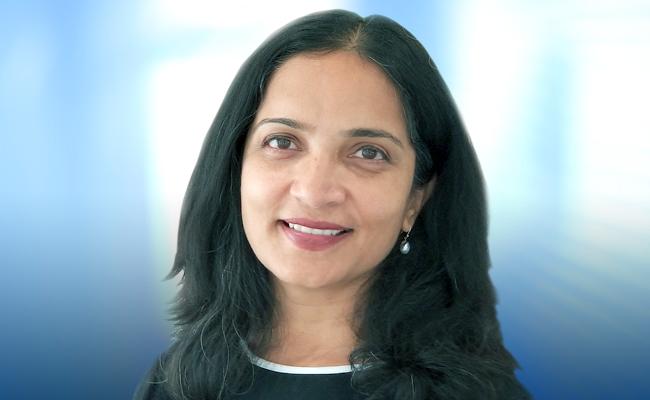Tetra Tech's Shilpa Shah Discusses Creating Resilient Power Systems
Helping power transmission utilities overcome major climate change challenges

Shilpa Shah leads Tetra Tech’s high voltage practice. With more than 25 years of experience in power transmission, distribution, and generation projects, her expertise is in the technical understanding of power systems and design of transmission systems.
Shilpa has successfully led the planning, design, construction, and commissioning of power grid upgrades and expansion, as well as new renewable interconnections to the power grid. She has been an integral part of several bulk electric system projects across North America, leaning on her technical expertise with 500 kV transmission, 500 kV bipole high-voltage direct current, and large-scale wind and solar projects.
Shilpa holds a Bachelor of Engineering in Electrical Engineering and is a professional engineer licensed in Ontario and Alberta.
How is climate change impacting today’s power system?
Electricity has become an essential aspect of our day-to-day lives. The power system carrying the electrons from the generating stations to the consumers is considered ‘critical infrastructure’ and is recognized as an important enabler of economic and social growth globally. Climate change is impacting everything around us and power systems are no exception.
Most power systems were built decades ago. The power systems are typically designed for 50- or 100-year weather events. Climate change consequences are stretching the systems beyond the normal operational and designed boundary limits. Frequent unprecedented extreme weather events are resulting in significant damage to the physical infrastructure and disruption of normal operation of the power system. The extreme temperatures put already constrained power systems in a position to fail. Such disastrous events are unfortunately becoming frequent even in countries with well-developed systems.
While the impact of climate change on power systems varies across the globe, broadly it has resulted in today’s power system becoming more vulnerable than ever before, driving a focus on grid resiliency and development of sustainable clean energy solutions.
What does the future power system look like?
Climate change consequences and technological advancements are reshaping the grid of tomorrow. Power producers and utilities are developing localized clean power generation, beefing up the cybersecurity infrastructure grid for greater reliability, and strengthening the grid for climate change resiliency with an aim to build a modernized, interconnected grid.
As a result of the global push to build net-zero infrastructure, clean energy solutions are becoming mainstream and driving significant build-out of utility-scale renewable generation and widespread electrification. Technological advancement is facilitating grid modernization and digital transformation, including deployment of state-of-the-art power flow control equipment for distributed generation integration; advanced protection, controls, and communication systems for optimized and safe operation; and artificial intelligence-driven predictive maintenance for greater reliability. Tomorrow’s power system is going to evolve into a digitally transformed and sustainable grid. Tetra Tech provides the full spectrum of services to clients in this transitional phase of power grid reformation.
What is needed to meet clean energy goals in the United States?
A centralized planning and framework is needed to address inadequate transmission hosting capacity and the lack of streamlined regulatory approval processes for new transmission development. For example, bulk power generated from offshore wind farms, which are initiated at a state level, are facing limited options for onshore interconnection due to capacity constraints on the existing transmission infrastructure. A regionally coordinated transmission infrastructure would allow greater flexibility of interconnection; however, such planning framework is not in place. This chicken-and-egg situation is one of the greatest risks to the net-zero pathway.
With that said, the industry is heading in the right direction with the U.S. government’s commitment to accelerate the expansion and modernization of America’s power infrastructure. The efforts to streamline the approval process, offer tax incentives, and obtain the Department of Transportation’s permission to allow use of transportation rights-of-way are some of the measures potentially resulting in fast-tracked transmission and renewable development.
What are the major challenges facing power utilities?
The climate change consequences and clean energy transition pose unprecedented challenges to power utilities. In addition to the ongoing issues associated with aging infrastructure, utilities are dealing with multiple new challenges such as the growing need for imminent transmission expansion for renewable integration, evolving power quality challenges as a result of electrification and distributed generation integration, and building cybersecure assets and grid strengthening to tackle climate change resiliency requirements. Additionally, getting the workforce ready to operate digital and modernized systems is a daunting task for the whole industry.
While utilities have started to implement non-conventional solutions beyond their comfort zone in design, construction, operation, and maintenance of the grid, they are playing catch-up at a pivotal juncture of grid evolution.
How can Tetra Tech support utilities to overcome these challenges?
Tetra Tech offers integrated, comprehensive project lifecycle consulting and engineering services supporting sustaining capital projects, new infrastructure build-out, and renewable generation integration. Our in-depth knowledge of permitting processes coupled with extensive engineering expertise and Tetra Tech Delta technology solutions enable us to support grid transformation projects from planning to implementation.
We leverage experience from our large pool of international experts with diverse backgrounds to implement industry best practices and offer simple and innovative design solutions to complex problems. For example, our 3D and AR/VR models aid in faster concept approvals and permits; integrated value engineering results in cost optimization that addresses funding issues; and grid modernization consulting services expedite internal approval of legacy system migration projects. Our technology solutions streamline decision making with advanced data analytics to build electrification forecast models, GIS asset monitoring tools, and AI-based predictive operations and maintenance tools. Our cybersecurity experts provide technology and solutions to help our clients build cybersecure assets, while our capacity building programs and staff deployment to augment our clients’ in-house workforce tackles the issue of skilled worker scarcity. We can support utilities in all aspects of their projects as well as improve on operations and maintenance practices.

